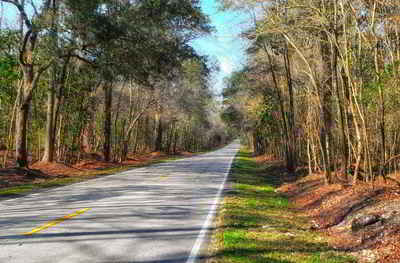South Carolina Counties
South Carolina is made up of fourty-six counties. They range in size from 392 square miles (1,016 square kilometers) in the case of Calhoun County to 1,358 square miles (3,517 square kilometers) in the case of Charleston County. The least populous county is McCormick County, with only 9,958 residents, while the most populous county is Greenville County, with a population of 395,357, despite the state's most populous city, Columbia, being located in Richland County.Clarendon County, South Carolina
Clarendon County Education, Geography, and History

Clarendon County is a county located above the fall line in the Piedmont of US state of South Carolina. Based on the 2010 census, its population was 34,971. Clarendon County was officially established in 1785, shortly after the American Revolutionary War, when the legislature divided Camden District into seven counties. One was Clarendon County. It was named after Edward Hyde, who was a Lord Proprietor and Earl of Clarendon. Its county seat is Manning.
Etymology - Origin of Clarendon County Name
Claredon is named for Edward Hyde, 1st Earl of Clarendon, one of the Lords Proprietors of the Province of Carolina.
Demographics:
County QuickFacts: CensusBureau Quick Facts
Clarendon County History
Clarendon County was named for Edward Hyde, Earl of Clarendon (1608/9-1674), one of the Lords Proprietors of Carolina. The county was first established in 1785; in 1800 it became part of Sumter District but then was split from Sumter in 1857. Several Revolutionary War skirmishes took place in this area; at Fort Watson in 1781 British soldiers were driven from a large Indian mound that had been fortified. During the Civil War Union troops under General Edward Potter moved through the area, burning several plantations. In the 1950s Clarendon County schools were sued over the issue of racial segregation. The case, Briggs v. Elliott, was one of several cases that eventually led the US Supreme Court to abolish segregation in 1954. Clarendon County can claim five South Carolina Governors, all related: James Burchell Richardson (1770-1836), Richard Irvine Manning (1789-1836), John Peter Richardson (1801-1864), John Laurence Manning (1816-1889), and John Peter Richardson (1831-1899). Children's author Peggy Parish (1927-1988) and tennis player Althea Gibson are also Clarendon natives.
Geography: Land and Water
As reported by the Census Bureau, the county has a total area of 696 square miles (1,802 km2), of which, 607
square miles (1,573 km2) of it is land and 88 square miles (229 km2) of it (12.72%) is water.
Neighboring Counties
Bordering counties are as follows:
- Sumter County, South Carolina - north
- Florence County, South Carolina - northeast
- Williamsburg County, South Carolina - east
- Berkeley County, South Carolina - southeast
- Orangeburg County, South Carolina - southwest
- Calhoun County, South Carolina - west
Education







